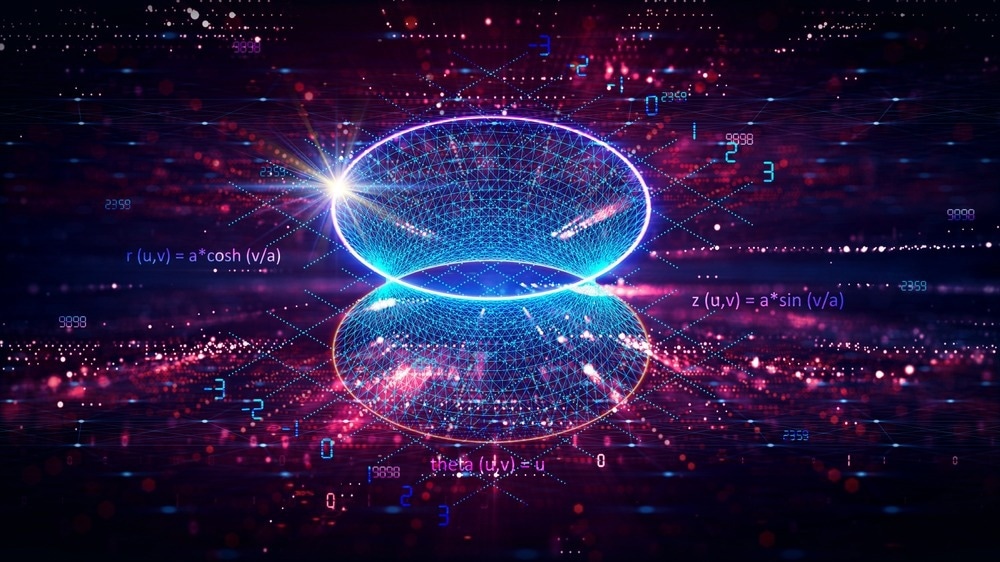Researchers at EPFL make significant advances in quantum physics by exposing a peculiar and enigmatic behavior in a quantum magnetic material and providing hints about potential future technological developments.

Image Credit: ArtemisDiana/Shutterstock.com
The world of quantum materials is a mysterious place where things do not always behave as expected. These materials can perform tasks in ways that traditional materials cannot, such as conducting electricity without loss or having magnetic properties that may prove useful in advanced technologies. These unique properties are governed by the laws of quantum mechanics.
Magnons in Quantum Materials
Certain quantum materials have minute magnetic waves, known as magnons, circulating through them. These waves exhibit peculiar behaviors. Gaining an understanding of magnons is essential for deciphering the microscopic workings of magnets, which will be important for the development of next-generation computers and electronics.
Up until recently, researchers believed they understood what to expect from the studies of these magnons’ behavior in strong magnetic fields. Researchers at EPFL, led by Henrik Rønnow and Frédéric Mila, have revealed a new and unexpected behavior in strontium copper borate (SrCu2(BO3)2), a quantum material. Although the study casts doubt on what is already known about quantum physics, it also raises intriguing possibilities for next-generation technologies.
The Only Game in Town
But why this particular content? SrCu2(BO3)2 is significant in the field of quantum materials, though the specifics are highly technical. This is because it is the only known real-world example of the “Shastry-Sutherland model,” a theoretical framework for comprehending structures where atoms' interactions and arrangement prevent them from settling into a simple, ordered state.
Known as “highly frustrated lattices,” these structures frequently endow the quantum material with complex, peculiar behaviors and characteristics. Therefore, SrCu2(BO3)2 is a perfect candidate to study intricate quantum phenomena and transitions due to its unique structure.
Neutron Scattering and Massive Magnetic Fields
Neutron scattering is a method that the scientists used to study the magnons in SrCu2(BO3)2. In essence, they exposed the material to neutrons and measured how many of them deflected off of it. Since neutrons have no charge and can therefore analyze magnetism without being affected by the charge of the material’s electrons or nuclei, neutron scattering is especially useful in the study of magnetic materials.
This work was done at the Helmholtz-Zentrum Berlin's high-field neutron scattering facility, which could probe fields as high as 25.9 Tesla. This level of magnetic field study was unprecedented and allowed the scientists to see the behavior of the magnons up close.
Subsequently, the scientists integrated the data with “cylinder matrix-product-states” computations, an effective computational technique that supported the experimental findings from the neutron scattering and clarified the two-dimensional quantum behaviors of the material.
It Takes Two to Tango
The novel method disclosed a startling finding: the material's magnons were forming “bound states,” or pairing up to dance, rather than acting as single, independent unities as would have been predicted.
The “spin-nematic phase,” a novel and unexpected quantum state with ramifications for the material’s properties, is the result of this peculiar pairing. Imagine it like this: unlike regular magnets on a fridge, which point either way (that is their spin), the focus of this new phase is on how the magnets align with one another to form a distinctive pattern rather than on their direction of orientation.
This is a fascinating finding. It exposes a previously unseen behavior in magnetic materials. This discovery of a hidden law of quantum mechanics may open our minds to previously unconsidered uses of magnetic materials in quantum technologies.
The research was funded by the European Research Council (ERC) Synergy network HERO, the
Swiss National Science Foundation (SNSF), and the Qatar Foundation.
More from AZoQuantum: Quantum-Inspired Noise-Resistant Phase Imaging
Journal Reference
Fogh, E., et al. (2024) Field-induced bound-state condensation and spin-nematic phase in SrCu2(BO3)2 revealed by neutron scattering up to 25.9 T. Nature Communications. doi.org/10.1038/s41467-023-44115-z